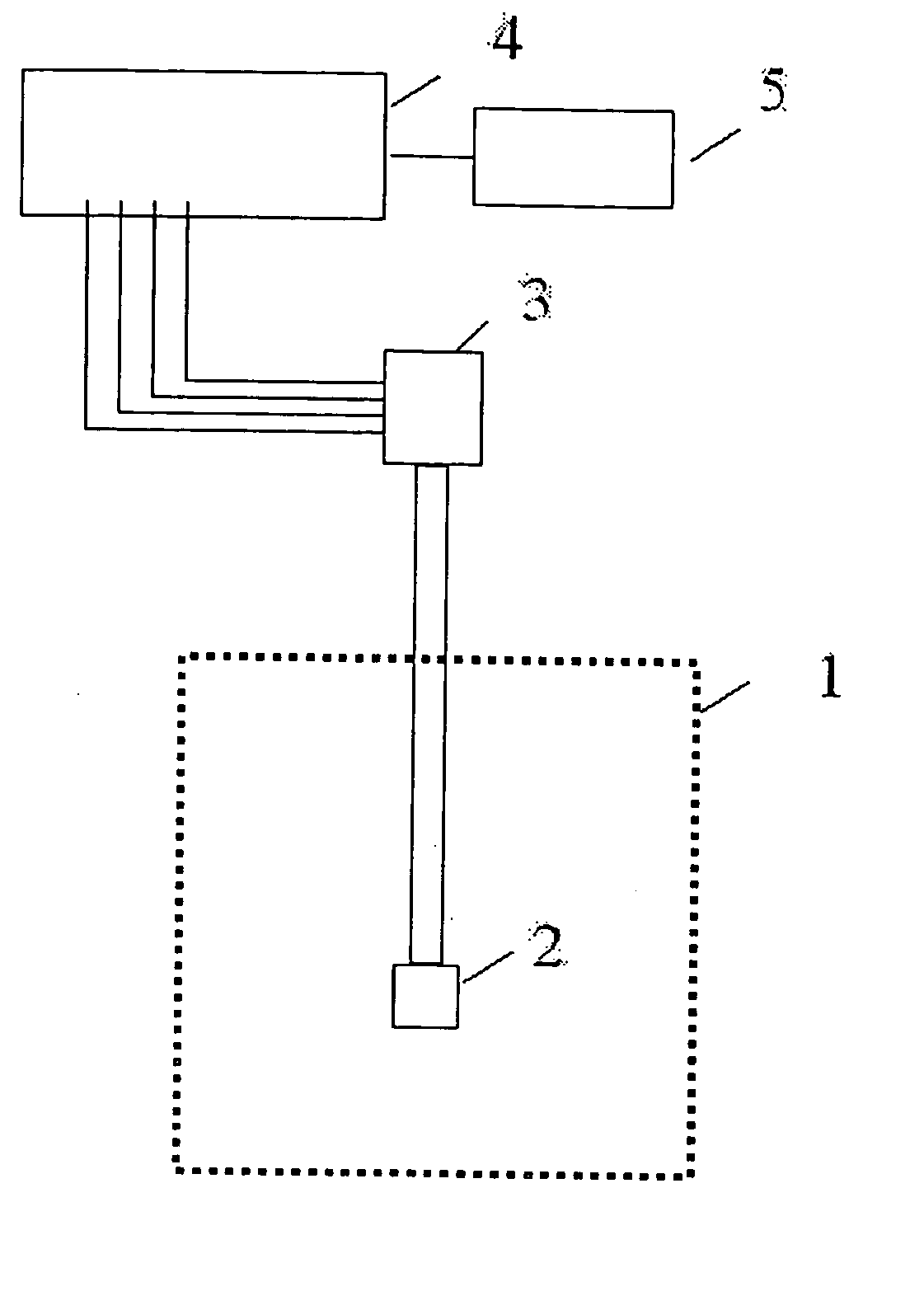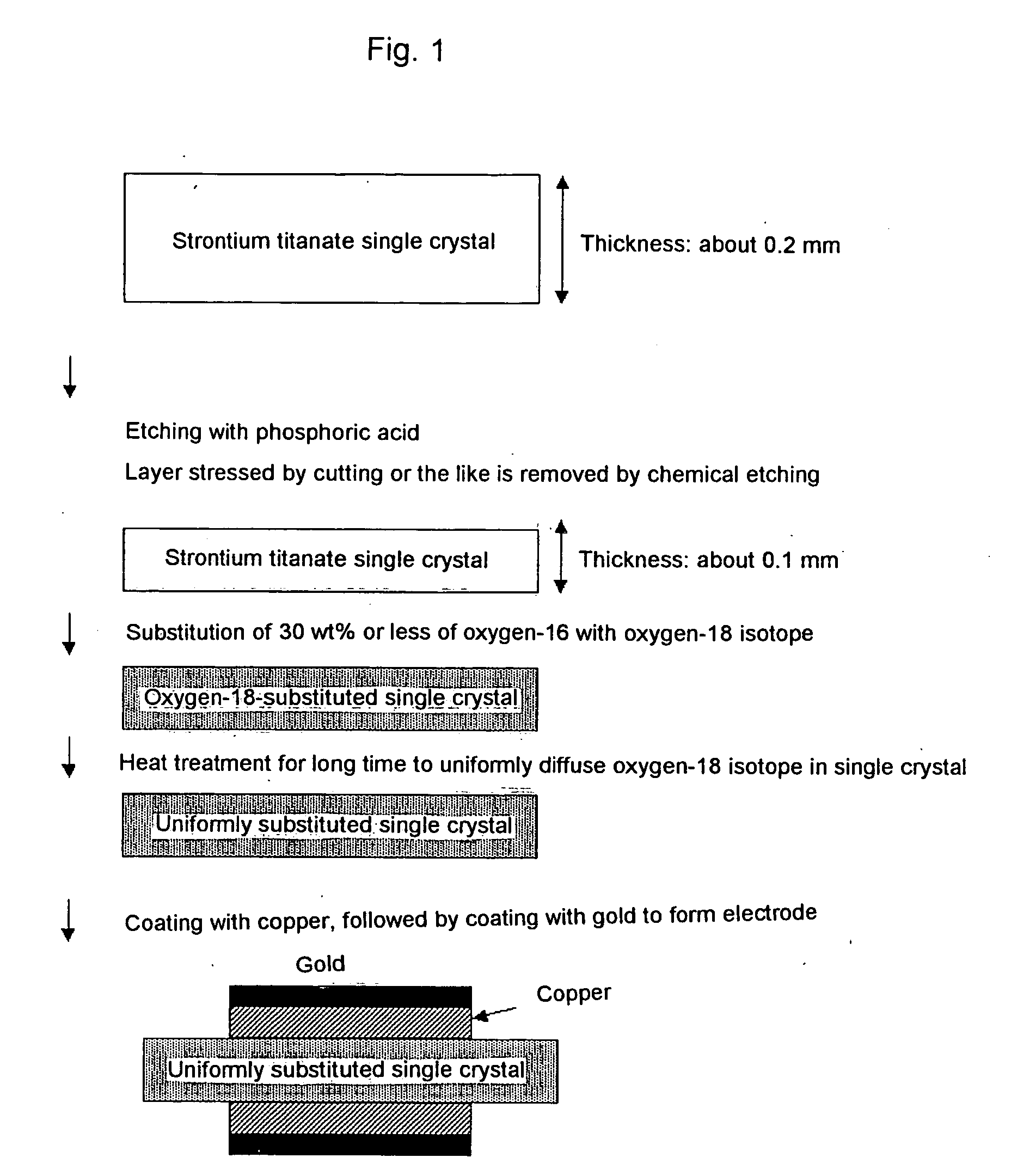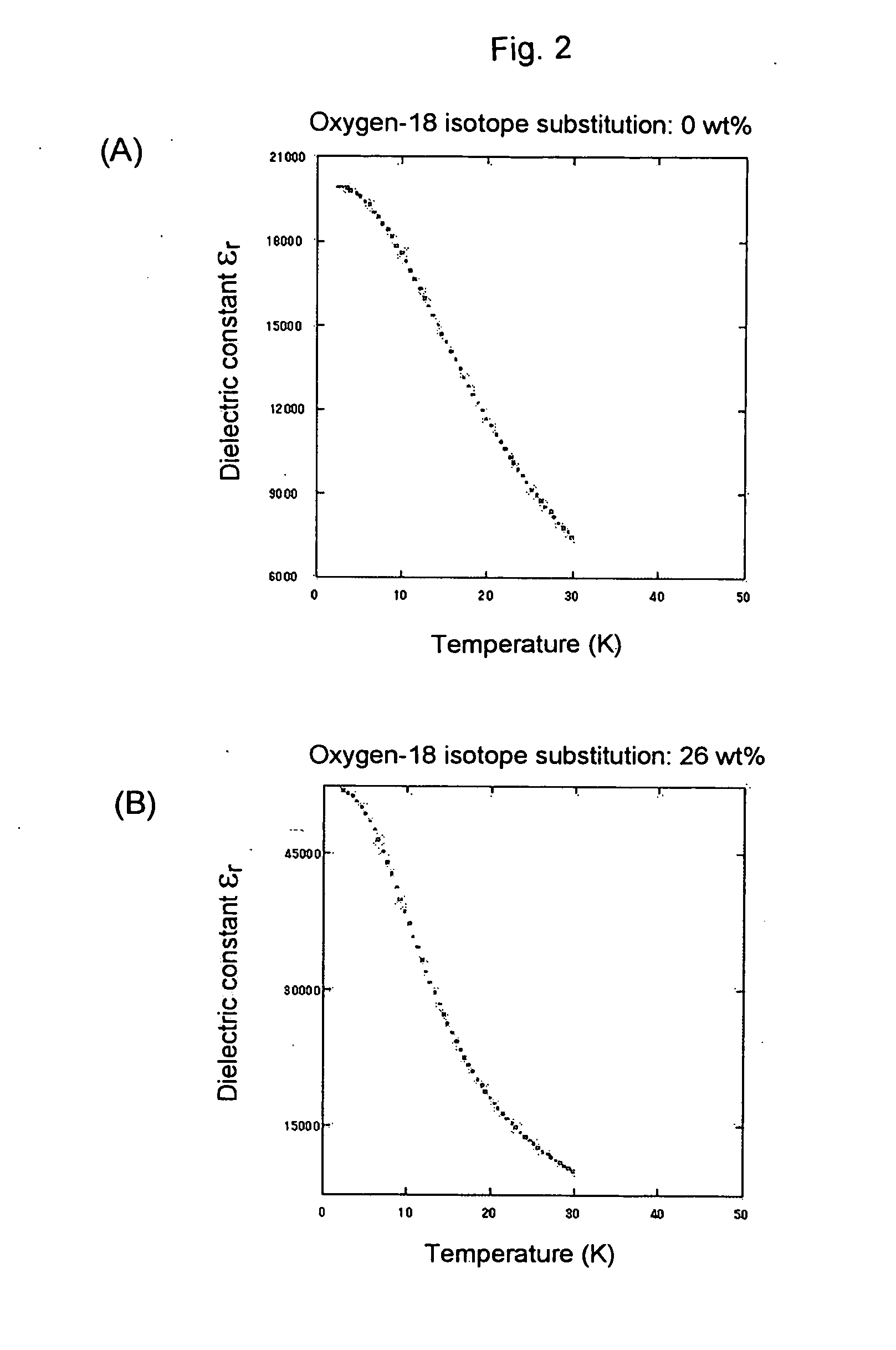Capacitance temperature sensor and temperature measuring device
a temperature sensor and capacitance technology, applied in the direction of heat measurement, capacitors with temperature varied dielectrics, instruments, etc., can solve the problems of low precision in temperature measurement, inability to obtain a capacitance temperature sensor having a one-to-one relationship between the temperature and the capacitance measured, and hysteresis, etc., to achieve excellent temperature resolution, high absolute sensitivity, and high sensitivity
- Summary
- Abstract
- Description
- Claims
- Application Information
AI Technical Summary
Benefits of technology
Problems solved by technology
Method used
Image
Examples
first embodiment
[0028] the present invention is described hereinafter in connection with FIGS. 1 to 5.
[0029]FIG. 1 shows a process for preparing the capacitance temperature sensor according to the first embodiment of the present invention.
[0030] The strontium titanate single crystal has a low dielectric constant layer formed on the surface thereof by lattice defect developed in the stage of cutting, shaping or growth. Therefore, the low dielectric constant layer is removed, e.g., by etching strontium titanate single crystal having a thickness of 200 μm with phosphoric acid or chemically etching a layer stressed by cutting or the like to reduce the thickness thereof to 100 μm. Thereafter, 30% or less, e.g., 26%, of oxygen-16 in the strontium titanate single crystal is substituted with oxygen-18 isotope. The lower limit of the substituted amount is not limited, but it is preferably more than 0%. The substitution of oxygen-16 with oxygen-18 isotope is carried out by enclosing oxygen-18 isotope and th...
second embodiment
[0046] the present invention will be described in connection with FIGS. 6 to 9.
[0047]FIG. 6 shows a process for preparing a capacitance temperature sensor according to the second embodiment of the present invention.
[0048] Strontium titanate single crystal has a low dielectric constant layer formed on the surface thereof by lattice defect developed in the stage of cutting, shaping or growth. Therefore, the low dielectric constant layer is removed, e.g., by etching strontium titanate single crystal having a thickness of 200 μm with phosphoric acid or chemically etching a layer stressed by cutting or the like to reduce the thickness thereof to 100 μm. Thereafter, 35% to 50%, e.g., 38%, of oxygen-16 in the strontium titanate single crystal is substituted with oxygen-18 isotope. The substitution of oxygen-16 with oxygen-18 isotope is carried out by enclosing oxygen-18 isotope and the strontium titanate single crystal in a sealed vessel, and then subjecting the mixture to heat treatment ...
PUM
 Login to View More
Login to View More Abstract
Description
Claims
Application Information
 Login to View More
Login to View More - R&D
- Intellectual Property
- Life Sciences
- Materials
- Tech Scout
- Unparalleled Data Quality
- Higher Quality Content
- 60% Fewer Hallucinations
Browse by: Latest US Patents, China's latest patents, Technical Efficacy Thesaurus, Application Domain, Technology Topic, Popular Technical Reports.
© 2025 PatSnap. All rights reserved.Legal|Privacy policy|Modern Slavery Act Transparency Statement|Sitemap|About US| Contact US: help@patsnap.com



